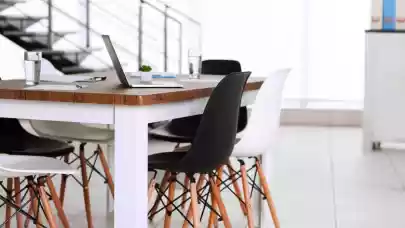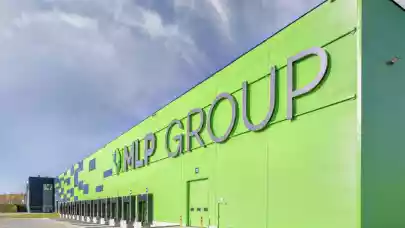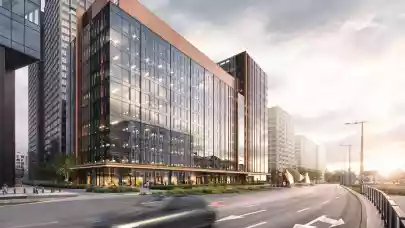
How do you incorporate the creation of an office into your business strategy as to support the growth of the organization and those that form it? Karolina Dudek from the Office Agency department at BNP Paribas Real Estate and Szymon Boniecki and Bartosz Rega from Monterail provide answers in a market report to be published in September.
“Workplace strategy” is a term that has recently become fashionable and appears in numerous industry articles. More and more organizations offer workplace strategy services, and it is not a coincidence that it is happening now.
The future is now
Everyone debates on the offices of the future, however, the future is already here. The working habits of the Polish population have evolved considerably over the past few years. It is more visible in some industry sectors, and less in the others. However, the one common denominator is that there is too much happening in all of the offices and it is becoming increasingly hard to manage the processes, which in turn puts a strain on those working in them.
Focused work on a report, short departmental meeting to review a project implementation plan, video conference with a client, informal working group coffee meeting that brings together people from different teams. A sudden increase in employment numbers in department X due to winning a new client, merger of departments Y and Z aimed at achieving synergy, launch of a project that involves several departments and external consultants. All of the above takes place within one office – the place for work and business meetings alike.
“This diversity is due to those working within a given organization as well as those coming in from the outside; offices are entwined in an invisible web of inter-organisational activities. What people bring into organizations is more than just movement. They bring with them things that enable them to both successfully carry out the tasks entrusted to them and become socially rooted in their workplace”, says Karolina Dudek, Workplace Strategy Manager, Office Agency, BNP Paribas Real Estate Poland.
The additional factor that affects our working patterns is the now increasingly popular project approach (Scrum, Agile), where cooperation between different teams and departments is required alongside meetings with service providers. The needs arising from the new working styles have to be met in a skilful and careful manner as to create a friendly and efficient workplace that will facilitate the exchange of knowledge and development of brilliant ideas.
New solutions wanted right away
Office fit-out designs created in the previous century are no longer working now. There are office walls between teams that should be cooperating and exchanging information, while the ever-present noise in open space makes it difficult to work for those that need to focus on the tasks at hand. Which is a no-win situation and the reason for organizations to search for new ideas on how to design their office space, while workplace strategy is one of the ways to resolve a number of issues and challenges.
“We are aware of it, which is why we decided to share our knowledge on how to draw up a detailed, A to Z, plan for creating an office fit-out design. Many organizations, when designing their office space, attempt to catch up with reality. They try and implement ideas and solutions spotted elsewhere, things that seem to be fashionable and contemporary, which frequently are not the most up-to-date and, when transferred into a Polish office, do not always fit in with the way the organization operates. Assuming a structured approach to workplace design enables organizations to be ahead of reality, recover control over their offices and create workplaces that will support the growth of the organization and those that form it”, adds Karolina Dudek, Workplace Strategy Manager, Office Agency, BNP Paribas Real Estate Poland
An office is a process, not a finished product
The report has been drawn up in collaboration with Monterail, a web and mobile apps development agency for whom continuous workplace improvement is high on the list of priorities. The company’s Wrocław office is a real-life case study that illustrates how to create workplaces that reflect the organizational culture and embed the elements that are of crucial importance for those working in the organization.
“We realized a long time ago that workplace design means constant improvement and adjustment to new needs and requirements. We have moved twice in the past eight years, and have recently leased additional space in the same building. It taught us a lot about workplace design and ourselves,” says Szymon Boniecki, Co-founder, Monterail.
Nowadays workplaces are more of a recurrent process than a finished product result of specific actions. Organizations change on an ongoing basis and spaces that have been designed once in the past tend to work after a while. It becomes necessary then to adjust the implemented solutions to the new conditions.
“This is easiest to do when our lease comes to an end and we are given the option to relocate. However, we have noticed that organizations frequently realize that their space is in need of modifications while their leases are still in effect”, adds Małgorzata Fibakiewicz, Director, Office Agency, BNP Paribas Real Estate Poland.
Teamwork
Therefore, workplace strategy is more than a set of parameters and instructions for an architect to design a given space. Workplace strategy means dealing with unpredictability: taking into account things that can be predicted and coming up with solutions to manage those elements that cannot. It is important thus that the entire organization is involved in creating the desired space to build awareness of the fact that space is a process.
“When we were designing our office, we involved people from all departments. The office is one of their work tools, and it has to meet their individual and ever-changing needs. We decided not to go for desk-sharing as not to create no man’s land. The office that we now occupy supports the building of our organizational community. Which is simply a win for everyone: those working here on an everyday basis and us. Our clients can see the benefits too because what they see is an engaged and harmonious team”, says Bartosz Rega, Co-founder, Monterail.
Engaging both your management and members of specific teams enables you to use their knowledge on how the organization operates and tailor the specific solutions to the organization’s culture and working styles. It lies with those responsible for drawing up a workplace strategy to stimulate the organization to be proactive, analyse existing data, structure the process knowledge, as well as to reveal the hidden knowledge on how work is done and how the organization is perceived by its people. Participatory design creation is on the one hand characteristic of mature and socially responsible organizational cultures, while on the other hand, it comes with the understanding that space is a strategic resource.
The authors of the report will discuss the key challenges faced by today’s organizations. They will show us how to combine workplace design with the implementation of decisions of strategic importance for the organization. Furthermore, they will explain what the participatory approach involves and reveal some tips on how to prepare for office relocation.



